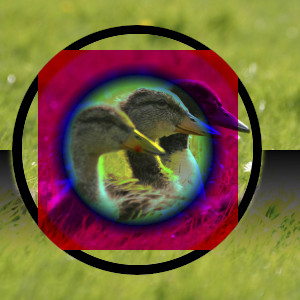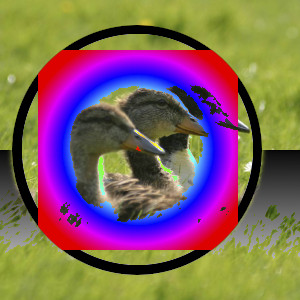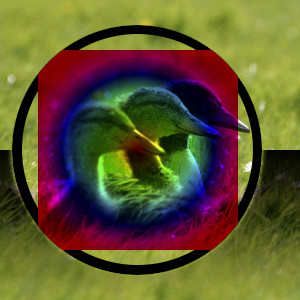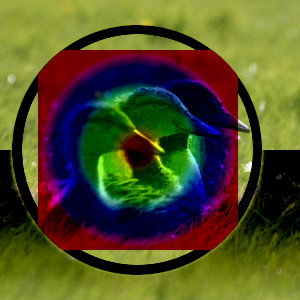| 2.3. Laagmethoden met donkerder maken | ||
|---|---|---|

|
2. Laag Modus |  |
The “Darken” group contains layer modes that make the result darker.
Afbeelding 8.20. Voorbeeld van de laagmodus “Enkel donkerder maken”

Top layer at 100% opacity using “Darken only” mode.
De modus “Enkel donkerder maken” vergelijkt per kleur en per pixel de bovenste en de onderste laag en gebruikt de kleinste van de twee getallen als resultaat. Hier hebben dus witte lagen geen effect en leidt een zwarte laag tot een zwart eindresultaat.
De modus is commutatief, de volgorde van de lagen maakt niet uit.
Afbeelding 8.21. Example for layer mode “Luma/luminance darken only”

Top layer at 100% opacity using “Luma/Luminance Darken only” mode.
mode compares the luminance of each pixel in the upper layer with the corresponding one in the lower layer and uses the smaller value in the resulting image. Completely white layers have no effect on the final image and completely black layers result in a black image. Luma is the perceptual version of Luminance.
The mode is commutative; the order of the two layers doesn't matter (except for transparent areas in the bottom layer).
Afbeelding 8.22. Voorbeeld van de laagmodus “Vermenigvuldigen”

Top layer at 100% opacity using “Multiply” mode.
Multiply mode multiplies the pixel values of the upper layer with those of the layer below it. The result is usually a darker image. If either layer is white, the resulting image is the same as the other layer. If either layer is black, the resulting image is completely black.
The mode is commutative; the order of the two layers doesn't matter (except for transparent areas in the bottom layer).
Afbeelding 8.23. Voorbeeld van de laagmodus “Doordrukken”

Top layer at 100% opacity using “Burn” mode.
Burn mode inverts the pixel value of the lower layer, divides that by the pixel value of the upper layer, then inverts the result. It tends to make the image darker, somewhat similar to “Multiply” mode.
In de fotografie is doordrukken een techniek in de donkere kamer om de belichting in sommige delen van de foto te verhogen. Dat levert meer detail op in de lichte delen van de foto. Wil je het voor dit doel gebruiken dan zal dat het best werken met een tekengereedschap in plaats van een laag modus en op afbeeldingen zonder kleur, in grijswaarden.
Afbeelding 8.24. Example for layer mode “Linear burn”

Top layer at 100% opacity using “Linear Burn” mode.
Linear Burn mode adds the pixel values of the upper and lower layers, and then subtracts 1.0. It tends to make the image darker, somewhat similar to “Multiply” mode.